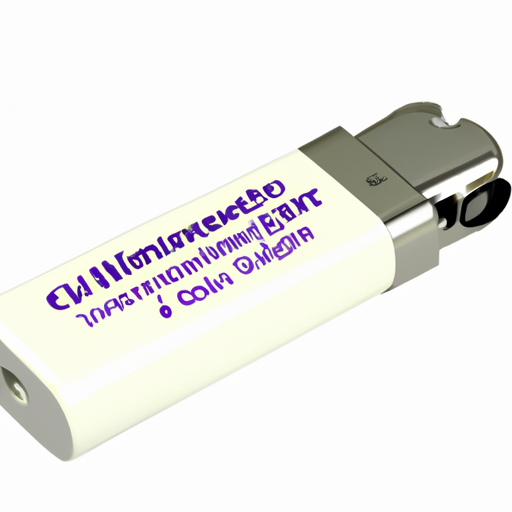Development Trends in the Battery-Based Electronic Products Industry
I. Introduction
In an era where technology permeates every aspect of our lives, battery-based electronic products have become indispensable. From smartphones and laptops to electric vehicles (EVs) and smart home devices, batteries power the devices that keep us connected and enhance our daily experiences. The significance of batteries in modern technology cannot be overstated; they are the lifeblood of portable electronics and renewable energy solutions. As the industry continues to evolve, understanding the development trends in the battery-based electronic products sector is crucial for consumers, manufacturers, and policymakers alike.
II. Historical Context
The journey of battery technology has been marked by significant milestones. Early battery designs, such as the voltaic pile invented by Alessandro Volta in the 1800s, laid the groundwork for future innovations. The transition to rechargeable batteries in the late 20th century marked a pivotal moment, enabling the proliferation of portable devices. The introduction of lithium-ion batteries in the 1990s revolutionized the industry, providing higher energy density and longer lifespans.
The rise of battery-based electronic products can be traced back to the introduction of portable devices like mobile phones and laptops. These innovations paved the way for the electric vehicle revolution, which has gained momentum in recent years as consumers and governments alike prioritize sustainable transportation solutions.
III. Current Market Landscape
Today, the battery-based electronic products market is thriving. Key players such as Tesla, Samsung, and Panasonic dominate the landscape, each holding significant market share. The types of products powered by batteries are diverse, ranging from smartphones and laptops to wearables and electric vehicles.
Consumer demand for portable devices continues to rise, driven by the need for connectivity and convenience. Additionally, the growth of renewable energy solutions, such as solar panels and energy storage systems, has further fueled the demand for advanced battery technologies.
IV. Technological Advancements
Technological advancements in battery chemistry are at the forefront of the industry's evolution. Lithium-ion batteries have seen significant improvements, including enhanced energy density and faster charging capabilities. Solid-state batteries, which utilize a solid electrolyte instead of a liquid one, promise even greater safety and efficiency. Alternative chemistries, such as sodium-ion and lithium-sulfur batteries, are also being explored as potential game-changers in the quest for sustainable energy storage.
Improvements in battery management systems (BMS) have enhanced safety features and introduced smart charging technologies that optimize battery performance. Miniaturization and integration of batteries into product design have allowed for the development of smaller, more efficient devices, catering to consumer preferences for compactness and portability.
V. Sustainability and Environmental Considerations
As the battery industry grows, so does the emphasis on sustainability and environmental considerations. The push for eco-friendly batteries has led to initiatives focused on recycling and the circular economy. Companies are increasingly investing in the development of biodegradable materials and sustainable manufacturing processes.
Regulatory pressures are also shaping the industry, with governments implementing policies that promote sustainability. Industry standards for battery disposal and recycling are becoming more stringent, ensuring that the environmental impact of battery production and disposal is minimized.
VI. Market Trends and Consumer Behavior
A significant trend in the battery-based electronic products industry is the shift towards electric vehicles. Government incentives and infrastructure development, such as charging stations, are encouraging consumers to adopt EVs. This shift is not only driven by environmental concerns but also by a growing preference for sustainable transportation options.
The growth of smart home devices is another notable trend. The integration of batteries in Internet of Things (IoT) devices has created a demand for energy-efficient solutions that enhance convenience and connectivity in our homes. Additionally, the rise of portable power solutions, such as power banks and solar chargers, reflects consumers' desire for reliable energy sources, especially in off-grid situations.
VII. Challenges Facing the Industry
Despite the promising growth of the battery-based electronic products industry, several challenges persist. Supply chain issues, particularly raw material shortages of lithium and cobalt, pose significant hurdles. Geopolitical factors can also affect the availability of these critical materials, leading to increased production costs.
Safety concerns remain a priority, as incidents of battery fires and recalls highlight the need for improved safety standards. Manufacturers must prioritize the development of safer battery technologies to mitigate these risks.
Competition and market saturation present additional challenges. Price wars among manufacturers can lead to reduced profit margins, while the constant push for innovation must be balanced with cost-effectiveness to remain competitive in the market.
VIII. Future Outlook
Looking ahead, the future of battery technology is promising. Predictions for advancements include the development of next-generation battery technologies that could revolutionize energy storage. Breakthroughs in energy density and charging speed are anticipated, enabling faster charging times and longer-lasting batteries.
The role of artificial intelligence (AI) and machine learning in optimizing battery performance and lifespan is also gaining traction. These technologies can facilitate predictive maintenance and enhance the efficiency of smart grids, contributing to a more sustainable energy ecosystem.
Global trends, such as climate change and urbanization, will continue to impact the battery-based electronic products industry. The demand for smart cities and sustainable energy solutions will drive innovation and investment in battery technologies, shaping the future of the industry.
IX. Conclusion
In summary, the battery-based electronic products industry is undergoing significant transformation, driven by technological advancements, consumer demand, and sustainability considerations. The evolution of battery technology has paved the way for portable devices and electric vehicles, while current market trends reflect a growing emphasis on eco-friendly solutions.
As we look to the future, innovation and sustainability will be paramount in shaping the trajectory of the battery industry. The implications of these developments extend beyond technology; they will influence our daily lives, the environment, and the global economy. Embracing these trends will be essential for stakeholders across the spectrum, from manufacturers to consumers, as we navigate the exciting landscape of battery-based electronic products.
X. References
1. Nykvist, B., & Nilsson, M. (2015). Rapidly falling costs of battery packs for electric vehicles. *Nature Climate Change*, 5(4), 329-332.
2. Tarascon, J. M., & Armand, M. (2001). Issues and challenges facing rechargeable lithium batteries. *Nature*, 414(6861), 359-367.
3. Liu, J., et al. (2020). A review of solid-state batteries: Materials, technologies, and applications. *Journal of Power Sources*, 480, 228823.
4. International Energy Agency (IEA). (2021). Global EV Outlook 2021: Accelerating ambitions despite the pandemic.
5. U.S. Department of Energy. (2020). Battery Recycling: A Sustainable Solution for the Future.
This blog post provides a comprehensive overview of the development trends in the battery-based electronic products industry, highlighting the historical context, current landscape, technological advancements, sustainability efforts, market trends, challenges, and future outlook.













